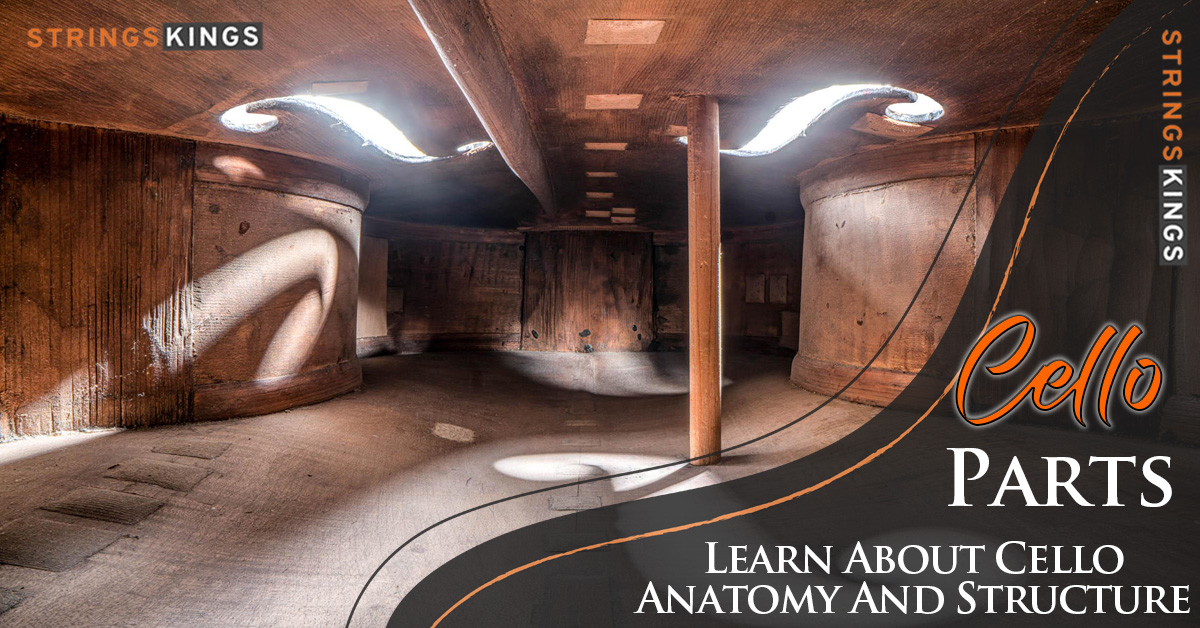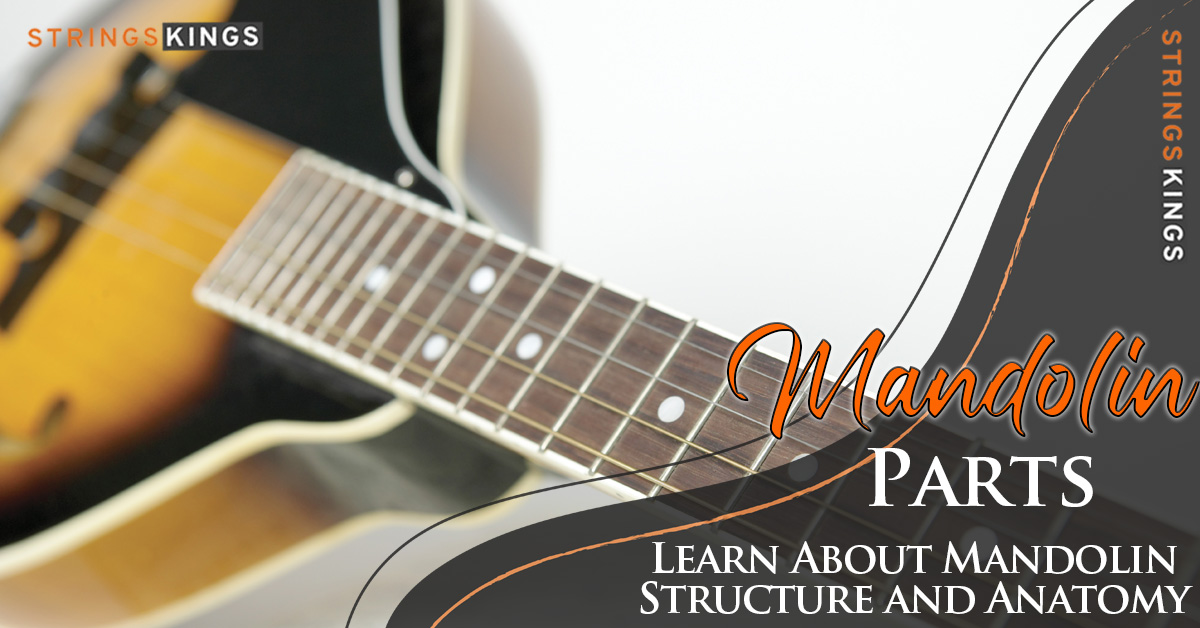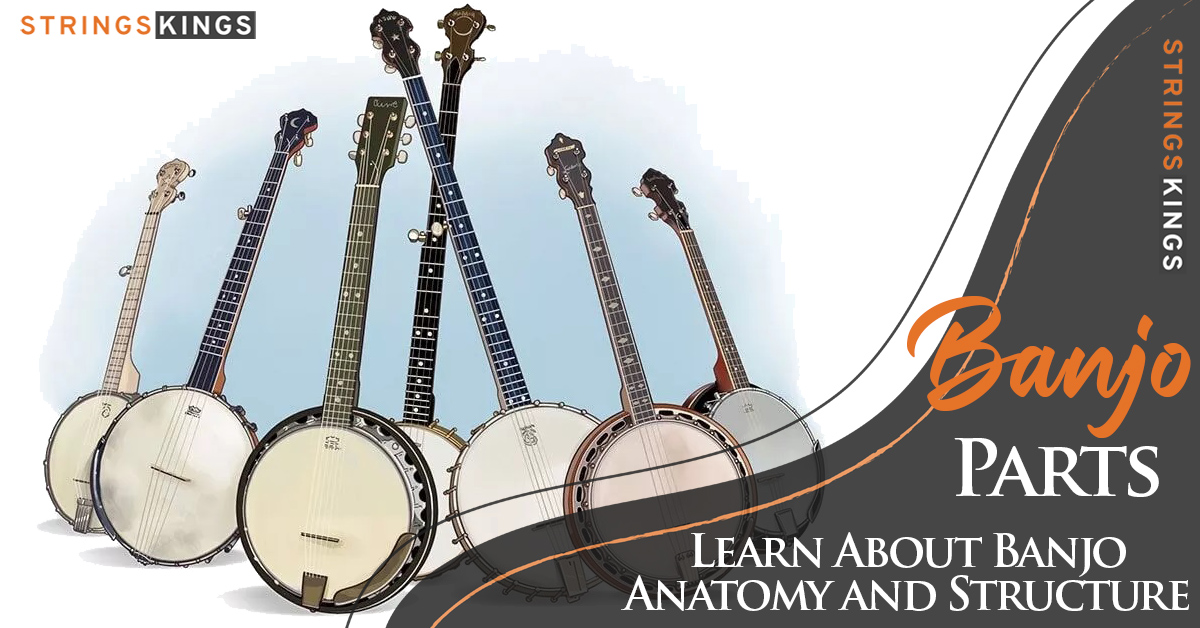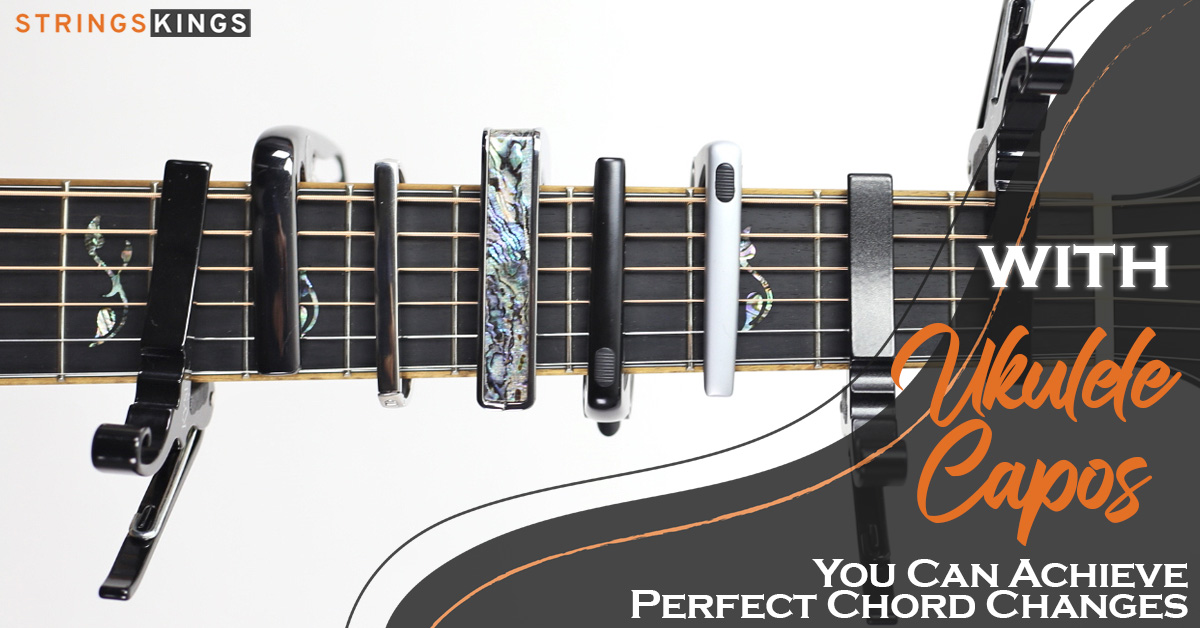Table of Contents
Distortion vs Overdrive vs Fuzz
Introduction
There has never been a better time to buy guitar pedals. Increasingly, people are making their own guitar pedals for use as the costs of recording music and creating music has decreased.
Today, thousands of boutique pedal companies across the world manufacture their own pedals and effects, although people have always experimented with circuits to create their own effects.
It can be difficult to identify what each pedal does, let alone why one manufacturer might be better than another for your particular application, given a large number of pedals on the market today.
It is also important to note that, while pedal makers do not follow any “standards” for what any given effect can be referred to, there are plenty of guidelines and limitations based on the electrical circuits inside a pedal.
And while there might be some confusion between how circuits work, what some pedals do and how to use them properly, we are here to provide you with some basics on the three most known pedal types: distortion, overdrive and fuzz.
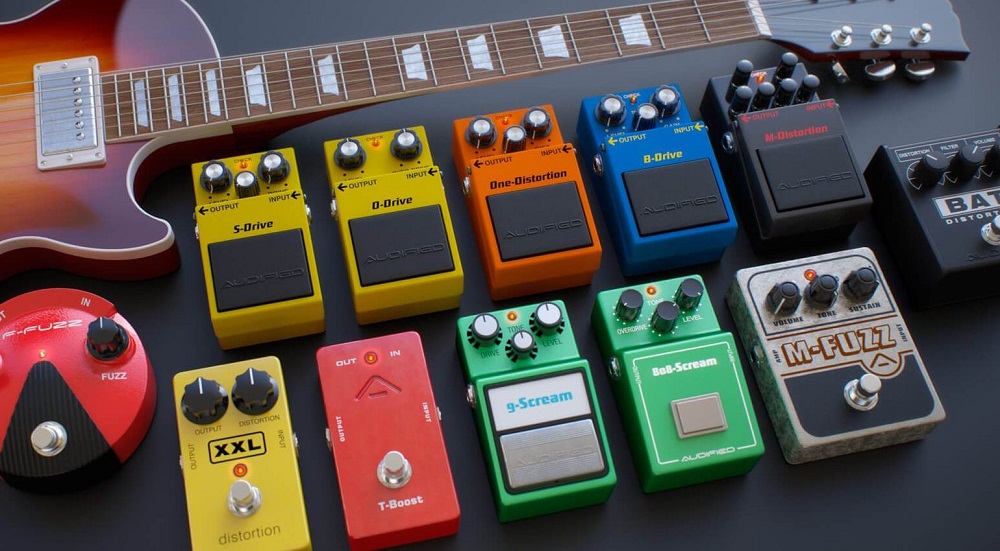
What is Distortion
In the context of music and sonics, distortion can mean a variety of things. There was a time when it was considered one of the most dangerous things in music. When analog equipment was the norm, unintentional distortion could ruin a recording completely.
The term distortion refers to the distortion of sound when the volume level of the sound exceeds the capacity of the device to handle it. In the digital age, it could be an input on an audio interface, or it could be a piece of hardware.
Nowadays, distortion is seen as a desirable effect in guitar playing and music production. Distortion and the sounds it produces have arguably contributed to the creation of entire musical genres.
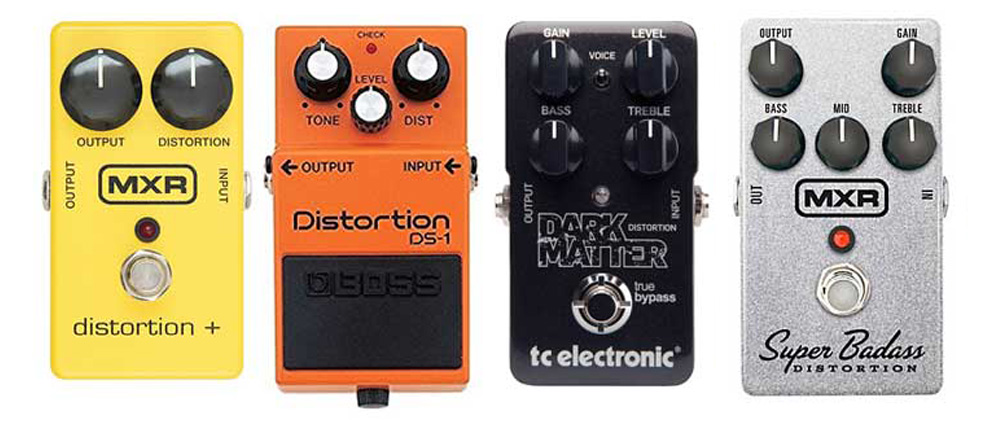
We will compare distortion to overdrive and fuzz in a moment, but it is important to note that distortion is considered a separate entity from the two. Despite their similarities, overdrive and fuzz are different types of distortion when it comes to guitar pedals.
Ideal for: Music lovers who enjoy Metal, Rock, and other heavy genres. If you wish to make your chorus lines, solos, and power chords stand out, a distortion pedal is also a great idea. The pedal board of every musician should contain a distortion pedal.
Here you can check our selection of best distortion pedals!
What is Overdrive
It is sometimes easy to confuse overdrive pedals with distortion pedals, but make no mistake, overdrive is a completely different animal. An overdrive pedal will drive your valves to the point of distortion, or at the very least will simulate what it would sound like if you were using a solid-state amplifier.
Overdrive pedals are designed to mimic the effect of turning up your valve amp to maximum volume, but they are much safer (and neighbor-friendly). You will probably find that it is the closest thing you can get to pure amplifier distortion without actually blowing your windows out.
Overdrive pedals are designed to provide the same dynamics as a cranked tube amplifier. If you play softly, you will hardly notice the gain, however, if you dig in and listen carefully, you will notice how the signal begins to break up. In addition to adding a smooth, dynamic sound, overdrives also provide a soft clipping sound, so do not expect an earth-shattering crunch when using one.
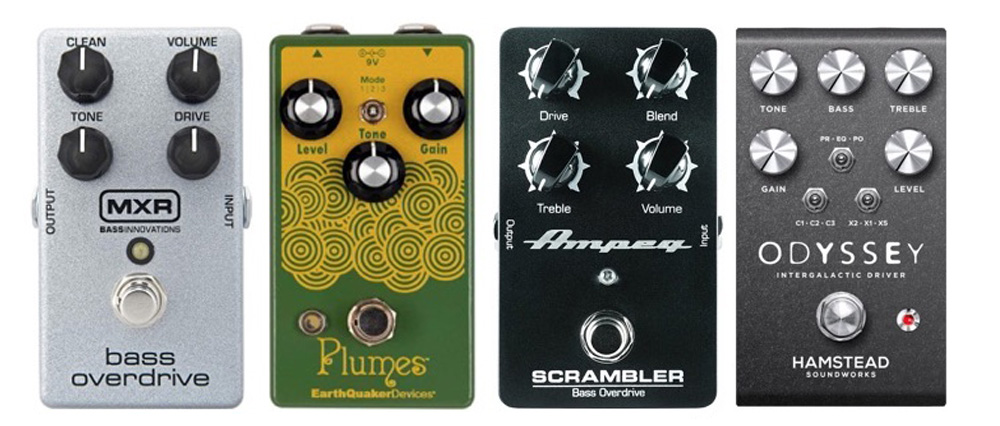
Definitely, overdrive is one of the “gentle” types of distortion that requires you to play hard before you can achieve the desired sound. It is recommended that you use an overdrive pedal in conjunction with a valve amplifier/tube amplifier as these pedals are designed to increase the performance of your tubes at lower volumes.
It is ideal for: Blues, Rock, and Country players as well as those who wish to gain boost their guitar with a bit of flavor without affecting the tone of their instrument.
Here you can check our selection of best overdrive pedals on the market!
What is Fuzz
Lastly, we have Fuzz. The circuitry of most Fuzz boxes is one of the simplest, however they immediately provide a devastating tonal hammer blow that is sure to melt anyone’s face. As you may know, fuzzes have their own agendas, so things can get a little hairy pretty quickly.
In order to achieve heavily saturated, fat-woolly tones, it is traditionally recommended that you set your desired volume and then crank the gain, fuzz level or sustain to the maximum. In general, fuzz boxes vary greatly in character, with some sounding thick and creamy (Big Muff Pi) and others sounding rattlier as if they have been spliced together.
It is usually possible to trace back fuzzes to a few of the key pioneering circuits from the 1960s. Many modern manufacturers have assembled their own unique hybrid circuits on the quest for the ultimate fuzz, which includes the Electro-Harmonix Big Muff, the Dallas Arbiter Fuzz Face, the Sola Sound/VOX Tone Bender, and the Maestro FZ-1.
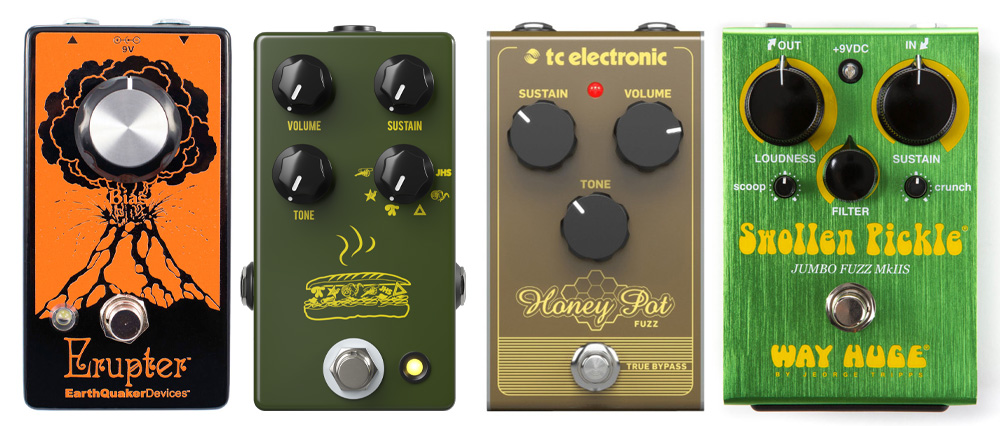
In spite of their original purpose of mimicking trumpets, replicating pleasantly broken amplifiers or generating endless sustain, these pedals were soon adopted by legends such as Jimi Hendrix, Jimmy Page, Jack White, David Gilmour, The Rolling Stones, and many others. As the saying goes, the rest is history.
In case you play rock, psychedelia, indie, post-punk, grunge, or simply enjoy a fat ’60s sound, you should consider adding a fuzz pedal to your shopping list. The fuzz effect will enhance the fatness of your riffs and create the effect of a fuzzy wall in your chords.
An ideal choice for: Fans of grunge, punk, funk, Hendrix-style tones, riffs, and those seeking an element of unpredictability.
Check our best fuzz pedals article on the link here!
What Do Distortion, Overdrive, and Fuzz Sound Like?
One word can describe the tone of distortion – aggression. It does not matter if you are using a distortion pedal for the guitar or applying the effect in recording software, the sound is going to be subjected to considerable saturation. There is a unique EQ setting that determines the overall coloration and character of every distortion pedal.
Compared to distortion, overdrive produces a more musical tone. This is due in part to the fact that overdrive gives you control over the level of saturation that is applied to the signal, based on the speed at which you play or the volume at which the signal originated.
A guitar or other instrument may sound gritty and grungy with distortion and fuzz, but with overdrive, the prominent frequencies of the instrument are highlighted and adding warm, creamy overtones.
The fuzz effect can melt your face when applied to a guitar or other instrument! As far as the tone is concerned, fuzz is more aggressive in targeting the mid and higher frequencies than it is in targeting the bass frequencies. Consequently, the low end remains quite clear after applying the effect.
In addition to saturating the upper frequencies of the guitar’s signal, fuzz is an effective way of making sure that a solo or riff can emerge from the rest of the mix and be heard above drums, bass, and rhythm guitar.
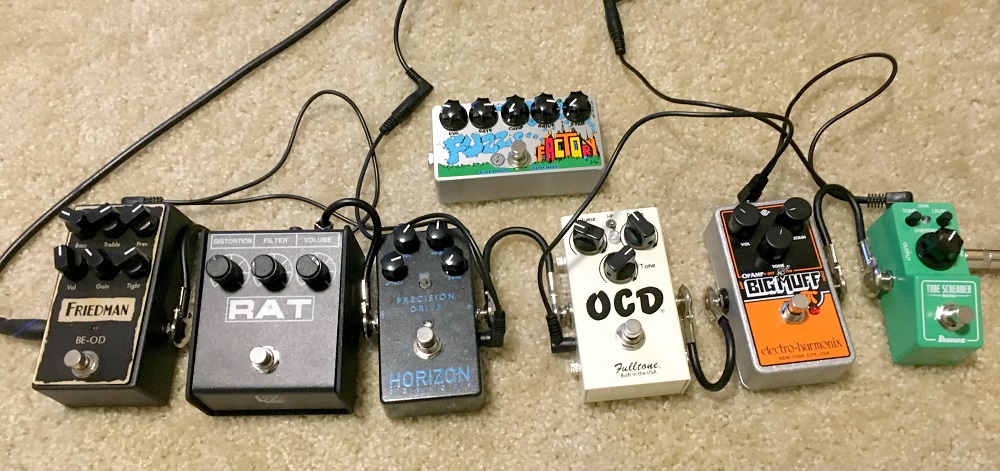
Using All Three Pedal Types
Let me ask you a question: now that you know roughly what distortion, overdrive, and fuzz are, what happens if you use all three pedals simultaneously?
Gain stacking is the term used to describe this process. Having all three pedals will allow you to layer more gain on top of your tone. In order to connect the guitar to the amplifier, you should arrange the three in the following order:
- Fuzz
- Overdrive
- Distortion
It is generally accepted that fuzz pedals should be placed at the beginning of the pedal chain. The reason for this is that the fuzz pedal’s effect is strongly influenced by the volume control of your guitar.
Using a volume control that is rolled back will significantly reduce the effect of the fuzz pedal, but if it is set to maximum, then it will be free to work. Therefore, it is best to have the fuzz pedal near your guitar (at the beginning of the chain), since this is the easiest place to control it.
There is a great deal of disagreement regarding the order in which to use the distortion and overdrive pedals. Our opinion is that it is better to have distortion after overdrive because we consider overdrive to be a more specific type of sound, while distortion is a way to simply increase the gain and create the wall of sound effect.
Conclusion
It is important to note that, as with all things tonal, there are no right or wrong answers. You should follow your instincts as to what sounds and feels best for your style and sound, regardless of what others may think. You should follow your instincts and not be afraid to experiment. The combination of pedals that appear illogical or outlandish can sometimes work wonders.
Now that you know the differences between these three effects, we believe that you will be able to use them to the maximum of their possibilities and get amazing sound outcomes from your guitar. If you are having any question about the topic we covered in this article, please let us know in the comment section below and we will be happy to elaborate!



